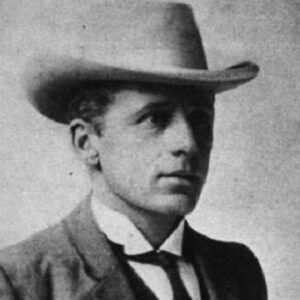Banjo Paterson was an Australian native whose work serves as a tribute to his homeland. He played several roles during his life, all of which were used to better the lives of his fellow countrymen and strangers around the world. He worked as a solicitor, journalist, war correspondent, and soldier throughout his life, but his poetry is what he is best known for. Paterson’s early years had a significant impact on him as a person and a writer. He had a humble existence in the Australian bush, yet he had a lot of cultural experiences. His family possessed horses, which he learnt to ride and care for, and his well-read grandmother encouraged his interest in poetry and literature. Despite spending most of his time in Sydney, he was profoundly influenced by his love of the bush. Many of his verses glorified the bushman’s portrayal. His upbringing, which was a blend of simplicity and high society, fueled his creative aspirations and resulted in some of Australia’s most renowned works. He was a true humanitarian in every meaning of the word, both in his literature and in his war efforts; he contributed selflessly to the world. His writings carry on his legacy and love for the Australian bushman today.
Childhood and Adolescence
Andrew Barton Paterson was born on February 17, 1864, near Orange, New South Wales, as Andrew Barton Paterson.
He was the oldest of seven children born to Andrew Bogle Paterson and Rose Isabella Barton. His father was a Scottish immigrant, and his mother was an Australian native who was related to Australia’s Prime Minister, Edmund Barton.
His father also wrote poetry, which was published in ‘The Bulletin,’ which later published Banjo Paterson.
His early schooling comprised of his governess tutoring and a basic bush school. His boyhood in the bush became a key motif in his writing later on.
He began attending ‘Sydney Grammar School’ when he was ten years old, in 1874. He lived with his grandmother, Emily May Barton, during his school years, who was well-educated and encouraged his love of poetry.
Banjo Paterson’s Career
Banjo Paterson began his literary career while still in law school. In February 1885, his first poem, ‘El Mahdi to the Australian Troops,’ was published in the Australian literary newspaper ‘The Bulletin.’
He started working as a solicitor on August 28, 1886. He worked alongside his partner, John William Street, for the next ten years.
In 1899, he covered the Boer War for the ‘Sydney Morning Herald,’ expressing his strong Australian nationalism. His colorful and comprehensive account of the ensuing conflicts received a lot of attention.
As an honorary veterinarian, he provided assistance to the Australian and British forces throughout the war.
Paterson traveled to China and England in 1901 to advance his career as a journalist for the ‘Sydney Morning Herald.’ The next year, he published ‘Rio Grande’s Last Race and Other Verses,’ his second collection of poetry, which described his war experiences.
His hard effort paid off in 1903 when he was named editor of the ‘Sydney Evening News.’
Paterson continued to serve his country as an ambulance driver for the ‘Australian Voluntary Hospital’ and as an officer in the ‘Australian Imperial Force’ during World War I.
‘The Collected Verse of A.B. Paterson,’ released in 1921, was a compilation of his three books of verse.
He maintained his journalism career after the war as the editor of the ‘Sydney Sportsman’ from 1921 until 1930.
He turned his attention to more leisurely and creative writing activities after retiring from journalism in 1930.
Banjo’s Major Projects
Angus and Robertson released ‘The Man from Snowy River and other rhymes in October 1895, a collection of Paterson’s verses aimed mostly at celebrating the bushman. Paterson became an immediate success after the first edition sold out in the first week and over 13,000 copies were sold in the first year.
In 1895, he wrote his most famous ballad, ‘Waltzing Matilda,’ which is regarded as his best portrayal of the bushman and is regarded as Australia’s unofficial national anthem. The term refers to a bushman journeying on foot with all of his belongings draped over his shoulder. Every year on April 6th, ‘Waltzing Matilda Day,’ the ballad is commemorated with a museum dedicated to the legends surrounding its origin.
Achievements and Awards
Paterson quickly rose through the ranks of the army, rising to Major in 1916 and commanding the Australian Remount Squadron.
For his achievements in literature, he was granted the Commander of the Order of the British Empire (C.B.E.) in the Queen’s New Year’s Honours List in 1939.
Paterson’s likeness appears on the ten-dollar bill, along with artwork and text from the poem “The Man from Snowy River.”
In Australia, A.B. Paterson College is named after him.
Personal History and Legacy
On April 8, 1903, Banjo Paterson married Alice Emily Walker. Grace, her first child, was born a year later. Paterson’s legacy was carried on just two years later with the birth of his son, Hugh.
His memory lives on via his various written works and unselfish gestures. He died of a heart attack on February 5, 1941, in Sydney.
Estimated Net worth
Banjo Paterson has a net worth of $ USD 5 million and earns a living as a lawyer, war correspondent, poet, writer, journalist, and poet.
Trivia
Banjo was the name of his favorite racehorse, which he and his family-owned.


